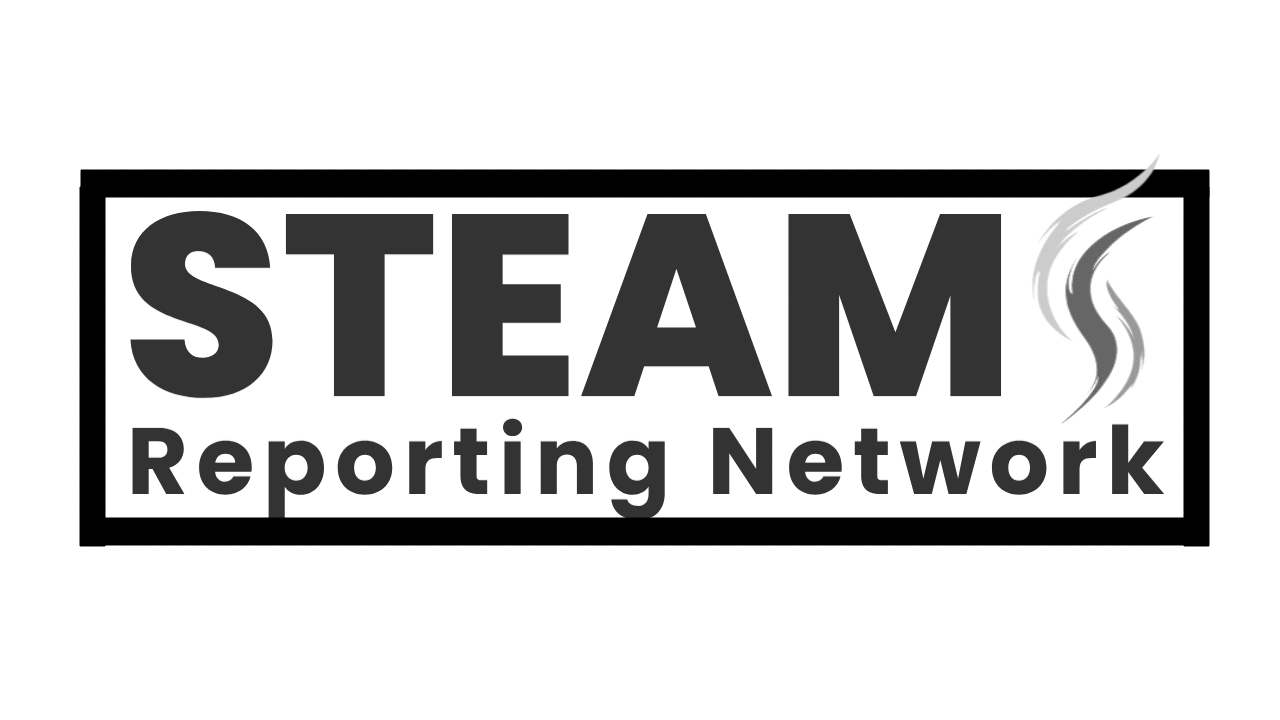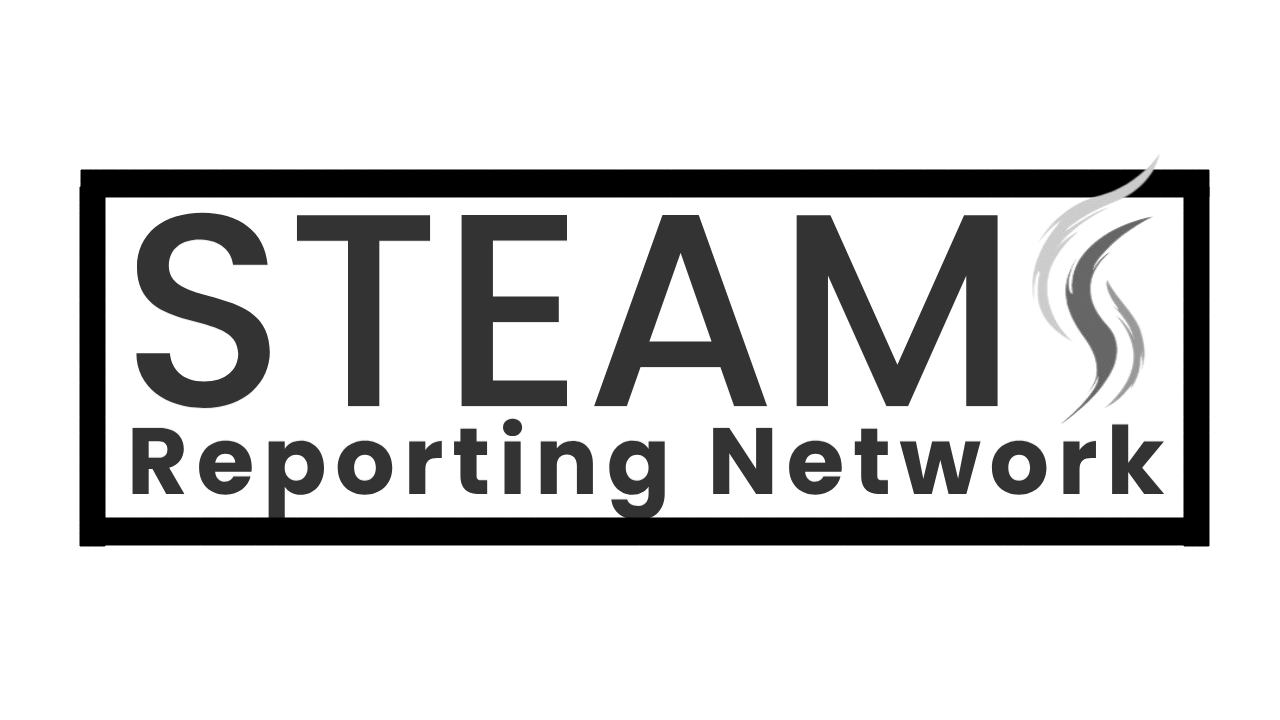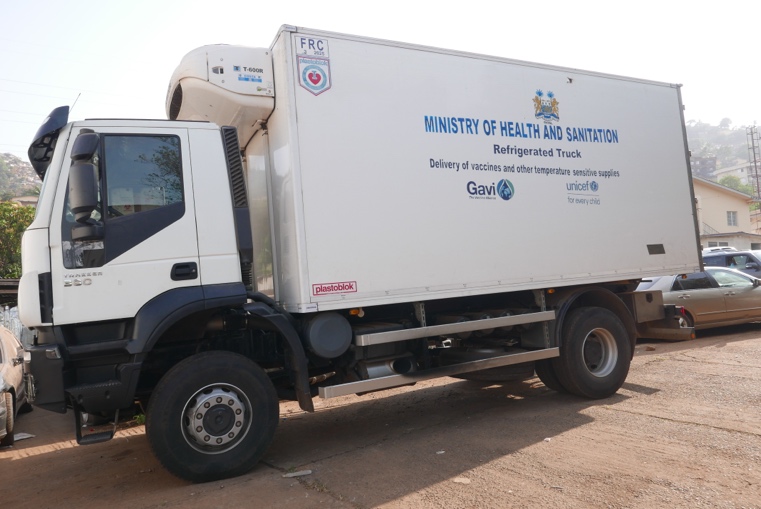
By Emma Black
In a field, far from Freetown, Sierra Leone’s capital, 35-year-old, Sento Sesay worked her family’s rice farm in Magbandi village. She was called from the field by her husband, Shaka Kanu, and was told she must come and get vaccinated against COVID-19. The mother of five children packed a small bag, made arrangements for her children and climbed aboard a motorcycle taxi. She rode behind a young rider over precarious roads for almost an hour to a vaccination site in Kawengha, Kaesseh Chiefdom, in the northern region of Sierra Leone.
Sesay was met by her husband and two local nurses. In hushed tones, her husband explained in her local language, Temne, that the Chief had told the community that vaccinations were mandatory and she must rush to get her needle and vaccination. Her husband showed her his arm and described the vaccination process.
The small 3-room Public Health Unit in Kawengha village is the last stop in a long series of locations, activities and paperwork that COVAX vaccines travel… from a foreign country to the Lungi Airport in Freetown and then through a detailed distribution network to finally end up in the arms of farmers, traders, nurses, drivers, etc.
Sierra Leone is not among the countries hardest hit by the global COVID-19 pandemic. There have been 125 recorded deaths from COVID-19 since March 2020. The National COVID-19 Emergency Response Centre (NaCOVERC) has recorded 7,665 cases as of the middle of February 2022 with slightly more men (4,446) than women (3,219) contracting the virus.
As with many other African countries, Sierra Leone is supported by COVAX, WHO and UNICEF. The global collaboration to provide vaccines falls under COVAX, which is co-lead by Gavi, the Coalition for Epidemic Preparedness Innovations (CEPI) and WHO. One of their aims is to guarantee fair and equitable access to COVID-19 vaccines for every country in the world. Sierra Leone, as of the middle of February 2022, has received 1,369,696 doses of vaccine from Johnson & Johnson (430,969), AstraZeneca (391,689), Chinese manufacturer Sinopharm (384,655) and Pfizer (202,383).
In a NaCOVERC and Ministry of Health and Sanitation statistical announcement on 23 January 2022, they reported 1,147,770 people have received one dose of vaccine or 13.8% of the population of around 7 million. 692,512 are fully vaccinated or just 8.3% of the population. The vaccination picture is slightly different amongst regions in Sierra Leone. Pujehun, in the south, have vaccinated 18% of their population. The Western Urban area, which includes Freetown, 9.4% of the 3 million eligible targets have been vaccinated with at least one dose. The Kono District in the far north east bordering Guinea has vaccinated only 0.7% of the people living in that area.
Overall, there is growing optimism that Sierra Leoneans are embracing the vaccines. Cynthia Wallis, a nurse at the 34 Military Hospital in Freetown’s west end, says, “We receive over 200 people weekly.”
In the dead of night, the Air France flight landed at the Lungi Airport, about a 4-hour drive outside Freetown. The airport was empty of passengers and silent except for the roar of the incoming plane and the purr of a waiting, refrigerated truck. Front end loaders and a hoard of Ministry of Health and airport workers surrounded the plane as the precious cargo was offloaded.
Skids of boxes, wrapped in plastic, were lowered to the runway tarmac. These skids were then lifted into the rear maws of waiting trucks, donated by GAVI through UNICEF.
Ansumana Gobo Foday, from the World Health Organization (WHO) noted, “It’s vital to maintain the proper temperatures for the vaccines, a ‘cold chain’ we call it, from the planes to the medical supply warehouses or ‘cold rooms’ in Freetown, then to the Districts for distribution to the village vaccination sites.” He added, “Vaccines are shipped using specialized equipment at specific temperatures that does not compromise the integrity of the product.”
Dr Tom Sesay, the Head of the Expanded Programme on Immunisation (EPI) said the COVAX facility will notify us if or when a shipment of vaccines is available. “We will respond and mobilize our crews at the airport and in the medical stores to prepare for the vaccine arrival.”
“After six hours waiting at the airport, the importation paperwork and cargo reception documents are filed and handed over. The trucks rush to catch the last ferry from Tagrin, near the airport across to Freetown where labourers are waiting to place the shipment into our cold room facilities. They were offloaded from the trucks at 5:30am,” said Joyce M. Kallon, the supply and logistics team lead at the Immunization Program, in Freetown.
She added, “Pharmacy Board codes and customs import papers must be filed. It’s not all fanfare and ceremony. It’s lots of effort by hundreds of people to bring the vaccines into the country and keep the system running efficiently.”
The vaccine storage facilities are buried deep within a maze of Ministry of Health and Sanitation buildings in Brookfields, a neighbourhood near the centre of Freetown. There are countless buildings housing innumerable offices in the government compound. The storehouse for the COVID-19 vaccines, and other vaccines, is on the first floor, accessed through a secure lock system.
Joyce Kallon said, “We have four cold rooms, two of which are set to -10 degrees Centigrade. The walk-in freezers were donated by the COVAX organization in 2019 – 2020. They brought them in and assembled them in the storehouse. We’re able to maintain a constant temperature below freezing, according to the different manufacturers recommendations.”
Yuki Suehiro, Chief Health and Nutrition at UNICEF, said, “Except for the Sinopharm vaccine, donated by China, all other vaccines arrive through the COVAX facility. UNICEF procures the vaccines, ensures transport to the receiving country and we’ve helped Sierra Leone develop and strengthen their cold chain to ensure proper handling procedures. We also supplied the refrigerated trucks to be used to transport the vaccines to vaccination sites.”
The medical storehouse is a mish-mash of cardboard boxes, paperwork and storage containers. There’s a slight hum in the air-conditioned facility as the freezers and cold rooms work to maintain a constant below zero temperature under the outside temperature of more than 30 degrees Centigrade. The structured order of the department is clearly defined. Kallon said, “We have our sorting area, the paperwork and desk area, the cold rooms and freezers, and a shipping area. Each area is as important as the next and when a shipment arrives, we work round the clock to catalogue, record, organize, pack and within a day or two we’re ready to ship vaccines out to the different parts of the country.”
Foday, from the WHO said it’s vital to handle the COVID-19 vaccines carefully and at the right temperatures as recommended by the manufacturer.
After reviewing all the paperwork, Kallon ticks off requests for vaccines from district medical centres. She notices the Port Loko District Medical Centre, among others, needs a re-supply of vaccines throughout their district. The vaccines are counted, batches recorded and re-packed from the cold rooms into portable iceboxes, specially designed to carry vaccines. The portable iceboxes, packed with “freezer packs” are used to transport vaccines from the cold room to regional centres where they’re stored in refrigerators.
In December UNICEF in Sierra Leone, with support from the United States Agency for International Development (USAID), donated a further 77 solar powered refrigerators to the Ministry of Health and Sanitation. These solar powered refrigerators were distributed to several Peripheral Health Units across the country to strengthen the cold chain system for all types of vaccines, especially the COVID-19 vaccines.
Joyce Kallon said, “If vaccinations take place outside of the regional facility, the final step often requires portable iceboxes to transport the goods to local areas for vaccination campaigns. The iceboxes incorporate the latest technology that can keep vaccines at their cold temperature for several days without needing electricity. They are packed and transported in refrigerated trucks to all areas of the country.”
The gleaming white refrigerated trucks are loaded very early in the morning, after an all-night session of coding, packing and paperwork. By 5:00am, the trucks are on their way. Musa Kallon, a seasoned and senior driver with the Ministry of Health and Sanitation, awaits his load manifesto. He and two assistants will check their cargo and record the vaccination batches that ride in the back of their truck and double-check their destinations. He’ll be delivering vaccines through the northern Port Loko District.
Musa Kallon said, “We’ve got a three-hour drive ahead of us out past Waterloo, through the police checkpoints and toll gates directly to the Port Loko Government Hospital. We’ll meet the District Medical Officer and his staff who’ll help unload, record batch numbers and check all the paperwork.”
As Musa pulls into the gates of the Government Hospital in Port Loko, the truck is met by a small crowd of nurses, orderlies and labourers who help unload the vaccine supply and review the vaccine documentation.
Dr Idriss Kamara is the District Medical Officer in Port Loko. He said, “We’ll double-check all the boxes and make sure the vaccines are safe and maintained at the appropriate temperatures. The nurses gathered are from several Peripheral Health Units and vaccination sites. They’ve returned their previously used freezer boxes and come into this hospital on motorbikes, buses and taxis to retrieve the vaccines and take them out to the furthest corners of the District.
Dr Tom Sesay said he and his team are passionate about vaccines. Speaking from his office in Brookfields, in the heart of Sierra Leone’s capital, Freetown, he said, “In all Districts, Chiefdoms, Wards and villages, social mobilizers, tribal authorities and the media are working on promoting vaccinations against COVID-19. They have targeted market areas, public transportation, religious institutions and any government building, to encourage more people to take the vaccine. That’s why we have to get the vaccines from Freetown to every corner of the country.”
Back at the Port Loko Government Hospital, nurses have collected their vaccine allotments and contracted commercial motorbike taxis to carry them and their precious cargo back to their PHUs or vaccination sites, including Kawengha village, in the Kaesseh Chiefdom.
Nurse Fatmata M. Bangura, dismounts the motorbike in the village after a 1-hour drive. She hands her cargo off to Neneh Conteh, the second of three nurses at the village health unit. Within hours of reaching the Kawengha health unit, the vaccines are stored, the nurses are geared up in gloves and masks and have begun vaccinating a short que of villagers, farmers and traders.
Nurse Fatmata M. Bangura said, “People are learning about COVID and vaccinations right across this area and we’re here to make sure we vaccinate as many people as possible.”
Shaka Kanu ushers his wife, Sento Sesay into a chair as Bangura prepares the vaccine. Sesay rolls up her sleeve and is injected with a COVID-19 vaccine.
This reporting was supported by the International Women’s Media Foundation’s (iwmf.org), Global Health Reporting Initiative: Vaccines and Immunization in Africa.
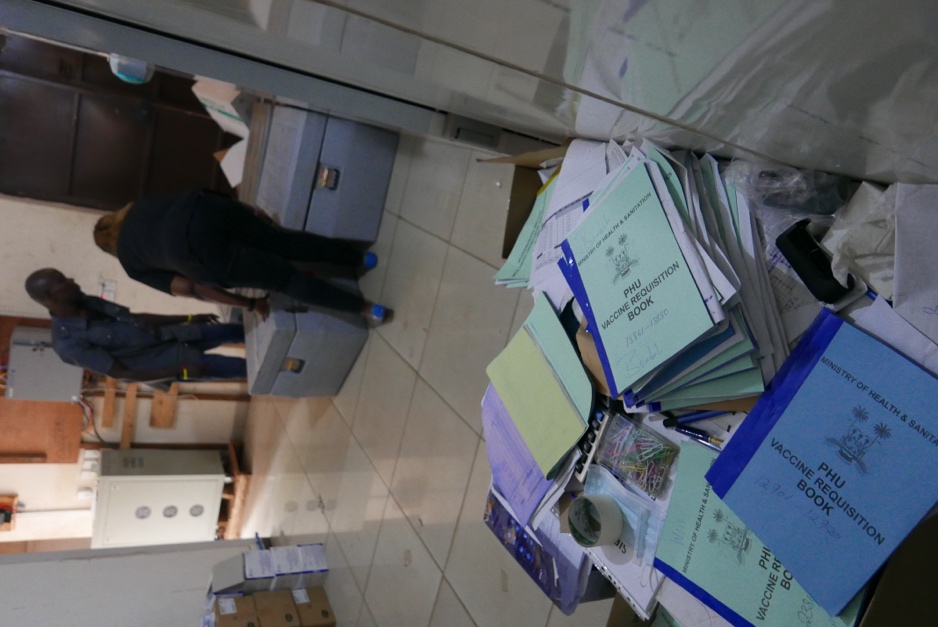
Medical storehouse in Freetown
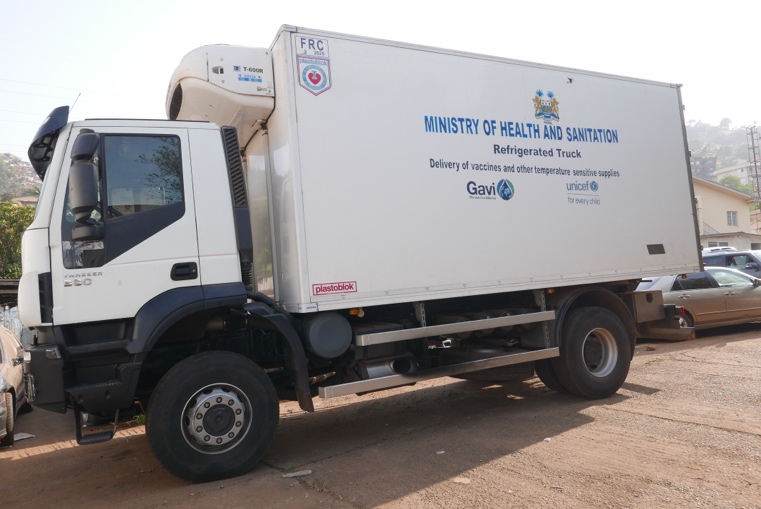
Refrigerated truck used to distribute COVID-19 vaccines from the airport to the medical stores to vaccination sites

